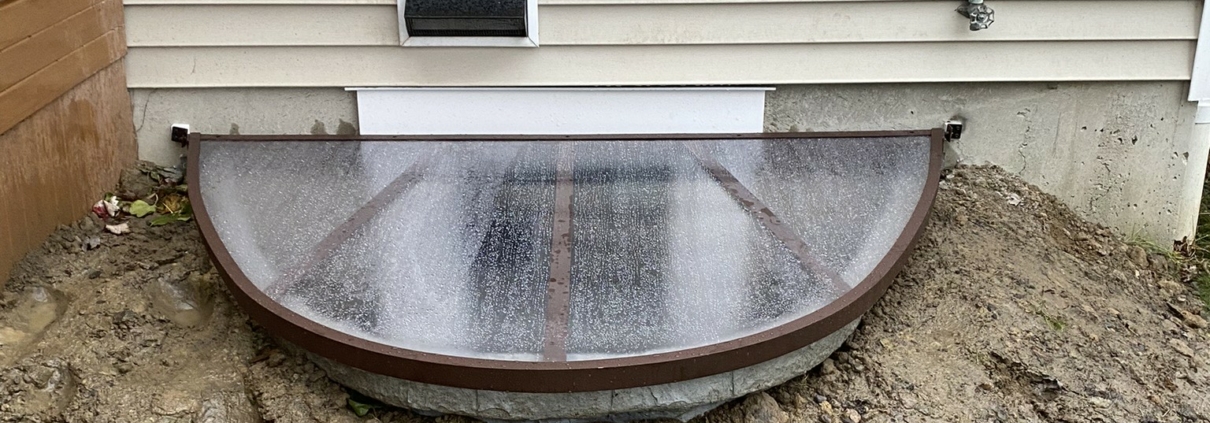Egress Window Installation: Everything You Need to Know
When it comes to home safety and building code compliance, installing egress windows is an essential component for basement living spaces. Whether you are looking to finish your basement or enhance your home’s safety, understanding the purpose, installation process, and benefits of egress windows can help you make an informed decision.
What is an Egress Window?
An egress window is a type of window designed to serve as an emergency exit in case of fire or other emergencies. These windows are often installed in basements or lower-level bedrooms, allowing occupants to safely exit in emergencies. In addition, they provide a point of entry for emergency responders if needed.
For a window to qualify as an egress window, it must meet specific size and opening requirements as set by building codes. These regulations are in place to ensure the window is large enough for a person to escape through and that it can be easily opened without obstruction.
Why are Egress Windows Required?
Building codes in many regions require egress windows in bedrooms and basement living areas for one simple reason: safety. If a fire or other disaster occurs, every bedroom needs to have at least two points of exit — usually a door and an egress window. In basements, where there may not be access to a door, an egress window becomes even more critical.
Besides fulfilling building code requirements, installing an egress window also enhances your property value. Potential buyers may consider a basement without egress windows as less valuable or non-compliant, so adding one can be an attractive feature when selling your home.
What are the Key Requirements for Egress Windows?
Egress windows must meet certain building code requirements. While these codes can vary slightly by region, here are the general requirements you can expect:
- Minimum Opening Size: The window must have an opening of at least 5.7 square feet. This allows adequate space for an adult to escape or for firefighters to enter.
- Minimum Height and Width: The opening must be at least 24 inches high and 20 inches wide.
- Maximum Height from the Floor: The bottom of the window opening cannot be more than 44 inches from the floor. This ensures that the window is easily accessible without the need for a ladder or other assistance.
- Window Well Size (if applicable): If your egress window is below ground level, you’ll need to install a window well. The well must have a horizontal area of at least 9 square feet, with a minimum horizontal projection and width of 36 inches.
- Escape Ladder: For window wells deeper than 44 inches, an escape ladder or steps must be installed to ensure safe egress.
What is the Installation Process for Egress Windows?
Installing an egress window is a complex process that typically requires the expertise of a professional. Here’s a general overview of the steps involved:
- Planning and Permits: Before any work begins, you will need to secure the necessary building permits. A contractor will review local building codes to ensure the project complies with regulations. It’s also essential to assess the location of the window and how it will fit into the home’s foundation.
- Excavation and Foundation Cutting: For basement egress windows, the installation begins with excavation. The contractor will dig out the area around the foundation to create space for the window. The foundation wall is then cut to create the opening for the window. This step requires precision, as cutting into the foundation must not compromise the structural integrity of the home.
- Installing the Window: Once the foundation has been cut, the new window is installed. This involves securing the window frame, sealing it to prevent water infiltration, and ensuring that it opens and closes smoothly.
- Building the Window Well: If the window is below grade, a window well will be constructed. The well ensures that the area outside the window remains clear for emergency access and provides proper drainage to prevent water from entering the basement.
- Finishing Touches: After the window and well are installed, the contractor will ensure proper drainage by adding a layer of gravel at the base of the well. They will also backfill around the well and restore any landscaping disturbed during the excavation process.
How Much Does Egress Window Installation Cost?
The cost of installing an egress window varies based on several factors, including the location, size of the window, and whether or not a window well is needed.
While the cost may seem significant, it’s important to consider the benefits of adding an egress window to your home. Not only does it improve safety and ensure compliance with building codes, but it can also add to your home’s value by making the basement a more usable, livable space.
Can I Install an Egress Window Myself?
Egress window installation is a project that many homeowners are tempted to tackle on their own, but it is typically not recommended. The process involves cutting into your home’s foundation, which is a complex and delicate task best handled by professionals. Additionally, failing to meet building code requirements can lead to fines, delays, and safety hazards.
By hiring a licensed contractor with experience in egress window installation, you can ensure the job is done correctly, safely, and in compliance with local codes.
Do Egress Windows Increase Home Value?
Yes, installing an egress window can increase your home’s value. Many homebuyers see the presence of an egress window as a sign that the basement can be used as a functional living space, such as a bedroom or family room. This not only adds to the square footage of the home but also makes it more attractive to buyers who are looking for additional living space. Moreover, egress windows make a home safer and can potentially lower insurance premiums due to increased safety features.
Final Thoughts
Egress windows are not just a building code requirement but a crucial safety feature for any basement living space. Whether you are considering installing one for a finished basement or simply for peace of mind, the benefits of egress windows far outweigh the costs. With professional installation, you can ensure compliance with safety standards and improve the value of your home in the process.
If you’re considering installing an egress window or have more questions about the process, it’s best to consult with a professional contractor who specializes in window installation. They can assess your property, provide a detailed cost estimate, and guide you through the entire process from start to finish.




